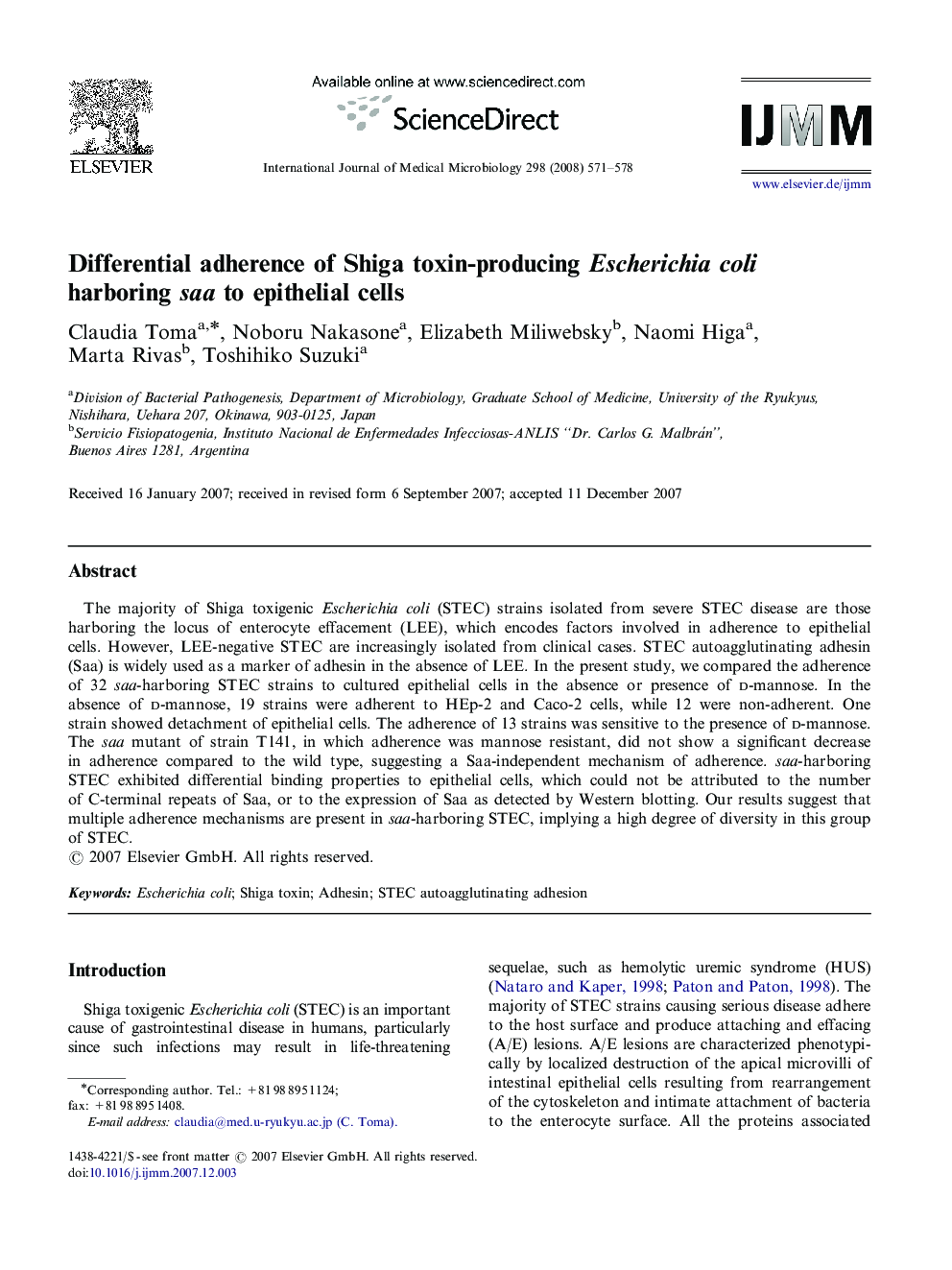| Article ID | Journal | Published Year | Pages | File Type |
|---|---|---|---|---|
| 2054316 | International Journal of Medical Microbiology | 2008 | 8 Pages |
The majority of Shiga toxigenic Escherichia coli (STEC) strains isolated from severe STEC disease are those harboring the locus of enterocyte effacement (LEE), which encodes factors involved in adherence to epithelial cells. However, LEE-negative STEC are increasingly isolated from clinical cases. STEC autoagglutinating adhesin (Saa) is widely used as a marker of adhesin in the absence of LEE. In the present study, we compared the adherence of 32 saa-harboring STEC strains to cultured epithelial cells in the absence or presence of d-mannose. In the absence of d-mannose, 19 strains were adherent to HEp-2 and Caco-2 cells, while 12 were non-adherent. One strain showed detachment of epithelial cells. The adherence of 13 strains was sensitive to the presence of d-mannose. The saa mutant of strain T141, in which adherence was mannose resistant, did not show a significant decrease in adherence compared to the wild type, suggesting a Saa-independent mechanism of adherence. saa-harboring STEC exhibited differential binding properties to epithelial cells, which could not be attributed to the number of C-terminal repeats of Saa, or to the expression of Saa as detected by Western blotting. Our results suggest that multiple adherence mechanisms are present in saa-harboring STEC, implying a high degree of diversity in this group of STEC.
